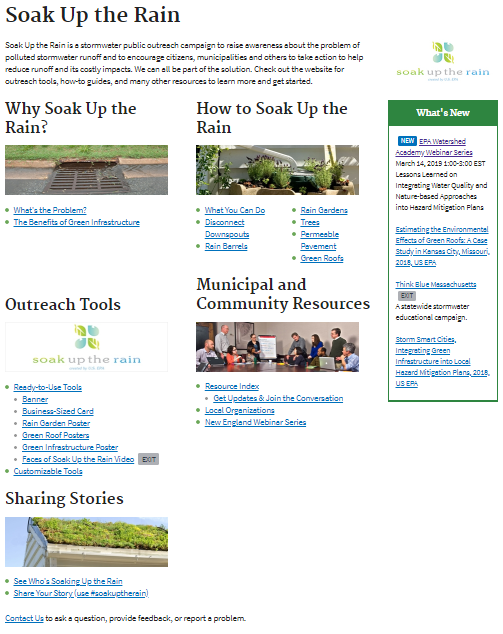- Myra Schwartz, EPA Region 1, Assistance & Pollution Prevention Office
- Carrie Robinette, Hazard Mitigation Specialist, Federal Emergency Management Agency (FEMA)
- Josh Bruce, Director, Oregon Partnership for Disaster Resilience – a program of the University of Oregon School of Planning, Public Policy and Management and the Institute for Policy Research and Engagement
This webcast looks at two completed pilot projects that have successfully integrated watershed planning, green infrastructure practices and source water protection into FEMA hazard mitigation plans. Learn about how these communities are sharing the benefits, including:
- Better results and more efficient planning. If watershed planning is part of the hazard analysis, optimal results for water quality, floodplain management, and hazard risk reduction can be achieved.
- FEMA and other federal funding may be available to water quality projects that also mitigate hazards.
- More opportunity for green infrastructure solutions to hazards.
- Reduced flood insurance rates for communities that adopt stormwater policies that reduce risk, including green infrastructure and watershed planning.
- Potentially meet requirements for reducing water quality impairments faster by management with other risks.
Other Resources: Check out www.epa.gov/soakuptherain to learn more about stormwater runoff and the benefits of green infrastructure.

- Flyer for March 14, 2019 Webcast (PDF)(1 pg, 147 K)
- PowerPoint presentation for March 14, 2019 Webcast (PDF)(54 pp, 6 MB)
- Green Infrastructure and Low Impact Development Takeaways from Ashland, Oregon (PDF)(8 pp, 3 MB)
- Incorporating Green Infrastructure and Low Impact Development into the Ashland Hazard Mitigation Plan - EPA/FEMA Project Report (PDF)(41 pp, 1 MB)
- Albany Green Infrastructure/Hazard Mitigation Planning Project (PDF)(8 pp, 212 K)
- Using Green Infrastructure to Improve Drought Resilience in the Commonwealth of Massachusetts (PDF)(50 pp, 3 MB)
- Including Watershed Planning and Green Infrastructure into State Hazard Mitigation Plans (PDF)(2 pp, 406 K)
- Why Connect with your State Hazard Mitigation Office (SHMO)? - Info for State Nonpoint Source Coordinators (PDF)(2 pp, 303 K)
